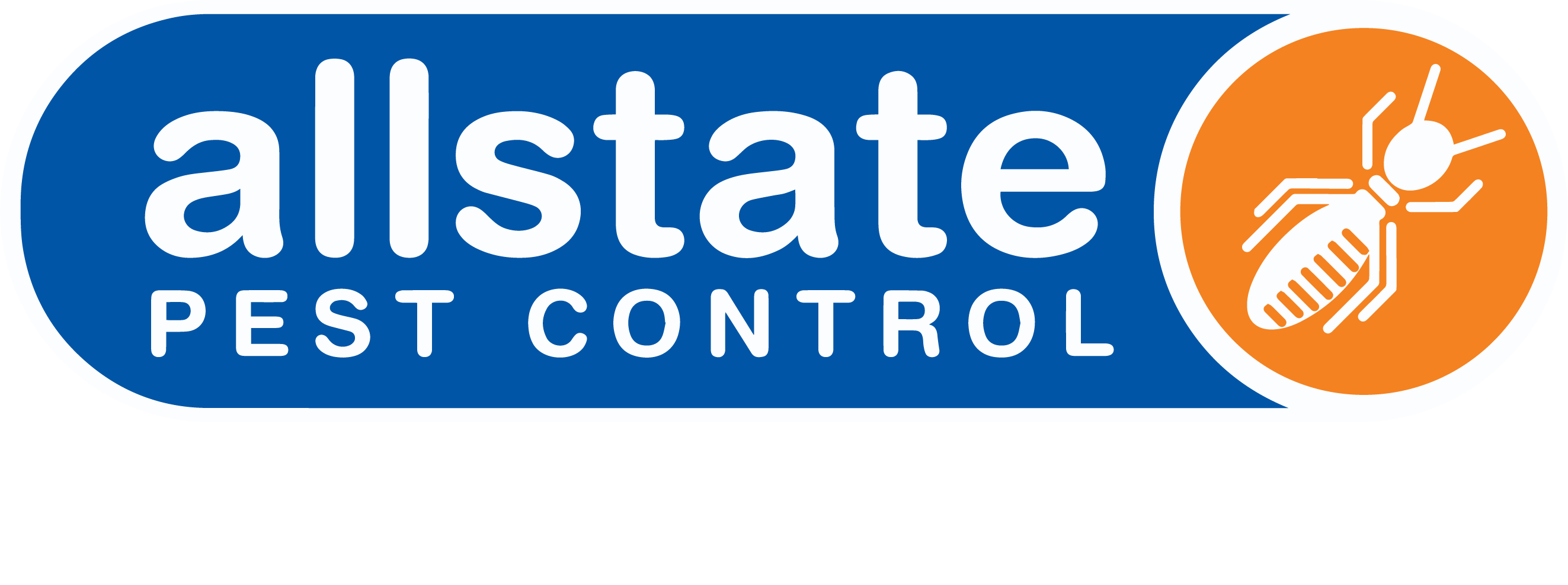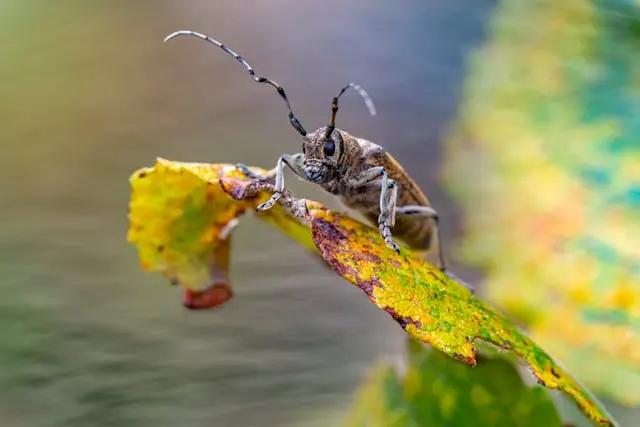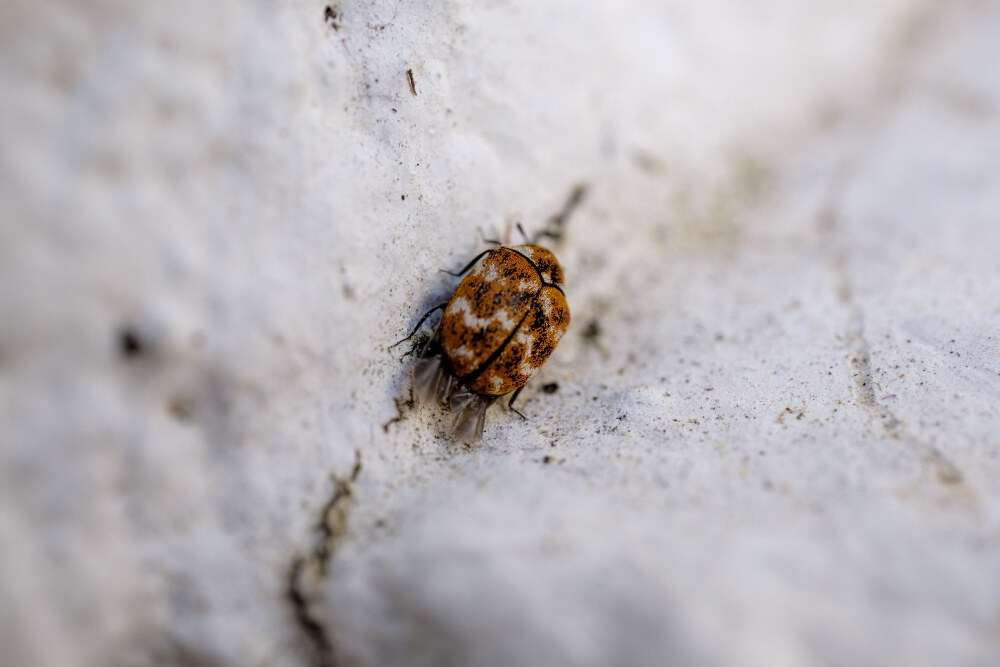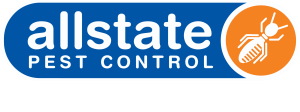
by | Apr 24, 2025 | Pests
Imagine stepping out to the backyard only to hear that unmistakable buzz around the fence line – or worse, right under the eaves of your roof. You look up and there it is: a growing wasp nest. Whether it’s paper wasps dangling from your pergola or European wasps disappearing into a wall cavity, one thing is clear, you’ve got a wasp problem.
In South Australia, warmer months come with sunshine, barbecues, and (if you’re unlucky) wasps. These invaders can turn any backyard gathering into a stressful situation, especially when they decide to build a new nest near your home or workspace. And unlike bees, wasps can sting multiple times, and are a serious concern, especially for families, pets, and businesses that cater to the public.
This guide is for South Australians dealing with wasp nests on their property. We’ll break down what you need to know about wasp nest removal, how to do it safely, and when to call in an expert like Allstate Pest Control.
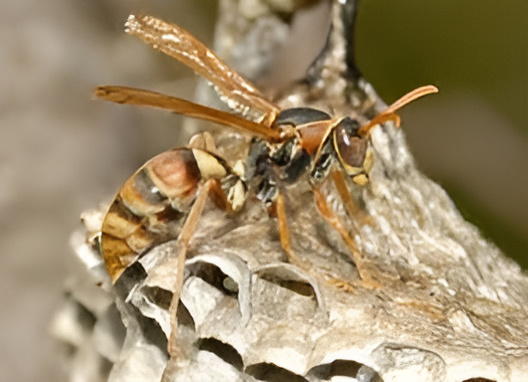
Why Wasps Build Nests Around Your Home
Wasps are incredibly resourceful. As long as they find sheltered areas, nearby food, and a space warm enough to nest, they’ll settle in (even if that means your space).
Each spring, a queen wasp emerges from hibernation to kickstart a new colony. She lays a small cluster of eggs, and once the first batch hatches, worker wasps take over construction and foraging. The nest increases in size week by week, often starting as small as a golf ball, but potentially expanding to the size of a basketball or larger if left unchecked.
Places where wasps build include:
- Roof voids and eaves
- Sheds, garages, and pergolas
- Wall cavities
- Ground hollows or tree stumps
- Behind cladding or fences
European wasps (Vespula germanica), the most aggressive and common in South Australia, tend to go underground or into voids, while paper wasps usually build visibly on surfaces.
What a Wasp Nest Looks Like (And What It Tells You)
You might spot wasps flying in a straight line to a hole in a wall or the ground. That’s your first clue. Then, depending on the species:
- Paper wasp nests look like small, grey honeycomb fans, often hanging under eaves or patio roofs.
- European wasp nests are concealed and more spherical. If you find one inside a wall, it can contain thousands of wasps.
- If you’ve found a round, papery ball attached to a branch or beam, you’re likely looking at an early-stage new nest.
If the nest entrance is busy with traffic all day, especially during warmer weather, chances are it’s active and growing.
The Real Risks of Having a Wasp Nest Around
Let’s be straightforward: wasps sting, and they don’t stop at one. Unlike honeybees, a single wasp can sting multiple times, and it’ll do so if it feels the colony is under threat.
European wasps, in particular, are notorious for:
- Chasing perceived threats aggressively
- Nesting close to human activity (under decking, near play areas, in garages)
- Defending their entire nest in swarms
A sting is painful, sure. But for many Aussies, it can also trigger serious allergic reactions. In fact, SA Health data lists wasp stings as among the most common anaphylaxis-causing bites.
Other research also shows stings from wasps and bees alone are responsible for one-third (33%) of insect-related hospital presentations during summer in Australia.
What to Do (and Not Do) If You Spot a Nest
Let’s be honest: the first instinct is often to grab the hose or spray. But that’s usually a bad idea.
Here’s what you shouldn’t do:
- Don’t poke, bang, or shake the nest entrance
- Don’t try to flood or set fire to the nest
- Don’t spray without a clear exit route and protective gear
Now, if the nest is small, newly built, and easily accessible, you might manage DIY safely. But anything beyond that is better left to the trained bee and wasps removal professionals at Allstate Pest Control.
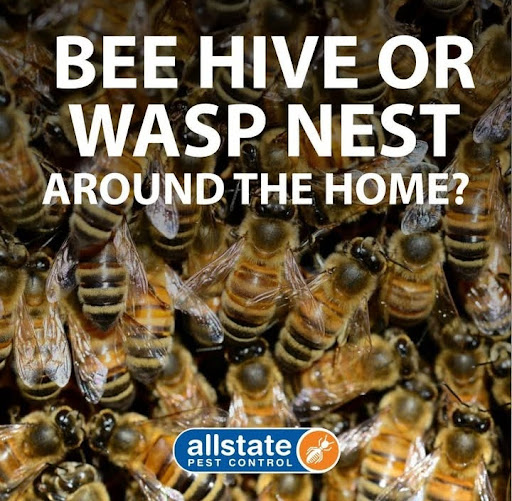
Step-by-Step: How to Remove a Wasp Nest Safely
Only attempt this if you:
- Know the nest is in its early stage
- Can clearly identify the type of wasp
- Are not allergic to stings
- Have the right gear and plan
1. Identify the Wasps
European wasps have:
- Bright yellow and black markings
- Black antennae
- A fast, aggressive flight pattern
Paper wasps are longer and have dangling legs while flying.
If you’re unsure, assume it’s a European wasp and don’t take risks.
2. Gear Up
You’ll need full protective clothing:
- Long sleeves, pants, gloves, and enclosed shoes
- Face protection, preferably a mesh head covering or bee veil
3. Pick the Right Time
Do it early in the morning or just after sunset. Wasps are less active when it’s cooler and dark. Never disturb a nest during the heat of the day.
4. Choose Your Method
For small nests:
- Use wasp traps nearby to reduce numbers
- A homemade solution using peppermint oil and dish soap in a spray bottle can be sprayed on paper wasp nests (but not on European wasps; they’ll fight back)
If the nest is in a cavity or ground, don’t attempt to physically remove it. It’s safer to contact a licensed pest control provider.
When to Call Allstate Pest Control
If you answer “yes” to any of these, call us:
- The nest is large or hidden
- The wasps are inside your walls, roof, or underground
- You’ve had previous infestations or old nests
- The wasps are aggressive or swarming
- You’ve been stung, or have young kids or pets around
At Allstate Pest Control, we’ve handled everything from single paper wasp nests to full-blown European wasp nests in commercial properties. We assess, remove, and provide ongoing monitoring to keep your home or business safe, using eco-conscious, pet-safe methods.
Not sure what to expect? Check our guide on wasps.
Long-Term Wasp Prevention Tips for SA Homes
Wasp nest removal is one thing. Keeping them away is another. Here’s how you can reduce the risk of a new nest popping up again:
- Clean up food scraps, sugary drinks, and pet food outside
- Keep bins tightly sealed
- Seal up cracks, vents, and holes in walls and roofs
- Hang decoy nests in spring – wasps won’t build near old nests
- Install fly screens and door seals
Want to go chemical-free? Plant mint, citronella, and wormwood around the garden. Their strong scents naturally deter wasps.
Frequently Asked Questions
What’s the safest way to remove a wasp nest?
Professional wasp nest removal is safest. If DIY, choose early morning, wear full protective clothing, and only attempt if the nest is small and clearly visible.
Do wasps reuse old nests?
No. Wasps don’t return to old nests, but they often build a new nest in the same area if it’s still hospitable.
Are natural repellents like peppermint oil effective?
Peppermint oil can deter wasps, especially when used early in the season. It won’t kill wasps, but it may stop them from settling in.
What attracts wasps to my yard?
Sweet drinks, ripe fruit, uncovered food, compost, and pet bowls are major attractants. So are sheltered areas where a queen lays eggs to start her colony.
How can I tell if I have a European wasp nest?
If you see wasps entering and exiting a wall, ground hole, or roof cavity in a straight line, especially mid-day, you may have a European wasp nest. These wasps are stockier and more aggressive than other species. Call an Allstate Pest Control expert for professional pest control.
Final Thoughts: Wasp Control Is About Safety, Not Just Convenience
The goal isn’t to go to war with nature but to live safely alongside it. Wasps play an essential role in ecosystems by controlling other insects, but they don’t belong in your living space. Especially not in your walls, roof, or kids’ cubby house.
If you’ve spotted one or more nests, don’t wait. They grow fast, and the risks grow with them.
Reach out to Allstate Pest Control for fast, trusted and professional wasp removal, whether you’re in the Adelaide suburbs or on a rural property. We’re here 24/7, and we handle the hard stuff so you don’t have to.

